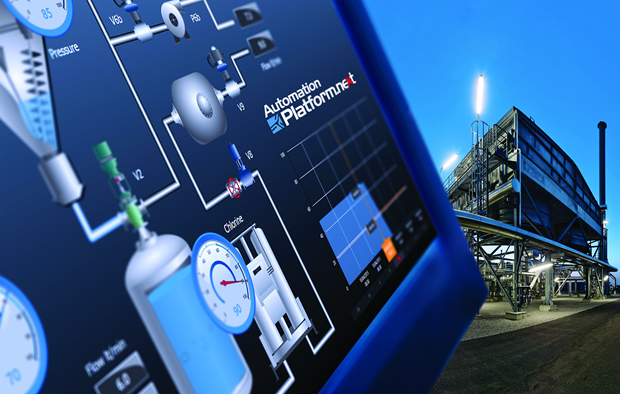The next 30 years with SCADA
Undergoing a step change, industrial SCADA is taking part in the move from proprietary code to next-gen technologies such as compatibility with SQL Databases and Cloud Computing .NET, OPC UA and HTML5. All part of moving towards a more connected world, SCADA are following the natural progression oriented towards technologies of the immediate future.
Managing Director of independent UK SCADA and HMI vendor Products4Automation (P4A), Paul Hurst discusses the move forward and what that means for the future.
Features considered ‘next generation’ just a couple of years ago are now available; such as high-end graphics, based on WPF (Windows Presentation Foundation) and XAML (Extensible Application Markup Language). WPF uses a vector graphics-rendering engine for example that is independent from the resolution and so takes full advantage of the modern graphics and Direct X hardware components.
These developments, combined with increases in pixel definition on the latest HMIs allow SCADA systems to provide touch controls and combine traditional data acquisition functions with improved layout diagrams, 2D and 3D graphics and other multimedia elements such as video and animated text and typography.
These technologies enable automation software developers to embrace the radical changes in device interaction that are evident in the industrial world, meeting current and emerging user expectations for more interface functionality.
The vast amount of data generated by a typical production process is of little use if not properly analysed, and this is being addressed by SCADA packages offering plant intelligence for analysing, measuring, comparing and predicting productive performance. All of the tools need to perform these tasks in a simple and efficient way, either locally, over the web, via mobile connections or at enterprise level.

Looking forwards, there is no doubt that having already made all this functionality mobile, that mobile devices will have more processing power, higher bandwidth capability and more storage. So the SCADA functionality you now have on the move will become faster, more visual and offer extended control to drill down through data layers and make decisions that directly affect plant control.
The next major step is likely to take into account how interaction actually takes place with SCADA platforms using different devices, this is happening already with the use of virtual reality environments and VR projections on headsets and glasses.
It is easy to see a production manager in a few years’ time walking around a facility with a pair of safety glasses on that he can touch the arm or use eye scanning software to select the SCADA package running in the background and see visualisations of plant productivity, trending analysis and efficiency live.
One you use the device in this way then alarms can pop into view and maintenance records of machines can be accessed as well as manuals and other useful resources. Hurst is confident this will happen sooner than initially believed.


